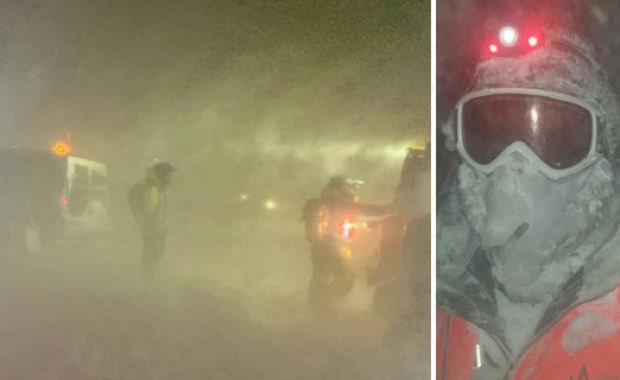One of the things that makes Christmas in Iceland very different from most other Western countries is the absence of a Santa Claus: In his place we have 13 Yule lads.
The Yule lads appear in old stories and folk tales. Historically the Yule lads and the other Christmas spirits were far meaner and more evil, but beginning in the 18th century and then especially during the 19th century they become more gentle. A 18th century royal decree about religious practice and domestic discipline parents were banned from disciplining their children by scaring them with horror stories of monsters like the Yule lads.
Made more gentle by the radio and urban life
The Yule lads maintained their old habits of mischief and petty theft, but their appearance changed. Old stories describe monsters with little resemblance to humans, but by the 19th century they had assumed a human form. When wealthy merchants began hosting public Christmas tree balls at the end of the 19th century the Yule lads had become friendly old men who brought treats.
Read more: Instead of a friendly Santa Iceland has 13 mischievous Yule lads and an evil Christmas Cat

The kinder Yule lads first appeared in towns and villages, while their evil characteristics survived longer in the countryside. However, their transformation had been completed by the 1930s when the Yule lads begin making regular visits to schools and making appearances in the radio to tell children stories and sing Christmas songs.
From 82 evil spirits to 13 friendly lads
Originally the number of Yule lads varied, there are as many as 82 different lads and trolls. In the 1860s, as the stories of the lads are being collected their numbers, names and characteristics are being standardized. At the same time their numbers shrink to 13, corresponding to the 13 days of Christmas.
Read more: The story of all the Yule lads, including Window-Peeper, Spoon-Licker and Skyr-Gobbler
Today the Yule lads dress in traditional Icelandic peasant wear, but for most of the 20th century the lads all wore red, like the American Santa Claus. The re-introduction of traditional dress was made by the Icelandic National Museum in the 1980s. In 1988 the Museum began inviting children from Reykjavík schools and preschools to the museum in December to learn about history and meet the Yule lads. And of course the museum lads wore traditional clothing, rather than imported Santa Claus costumes!
Dark winter spirits

The Yule lads are examples of the dark spirits of nature which take over during the winter as people retreat indoor. Outlying mountain and heath cabins, used during the summer are abandoned in the fall and as the darkness of winter descends people would retreat closed to the core of the farm.
One by one the Yule lads then come down from the mountains, until the entire crowd of trolls has descended upon the farms and towns on Christmas Eve: Nature and its uncontrollable spirits have reclaimed the land. Then one by one they retreat back to the mountains just as darkness retreats and the days get longer.
The characteristics of the Yule lads, which appear in names like Sausage Swiper, Meat Hook, Skyr Gobbler, offer another hint to their origin as reminders that people must take care of scarce foods during winter. Sausages, smoked legs of lamb, skyr and milk can disappear mysteriously if they aren’t kept under close surveillance!
Meet the mother: A child-eating, husband-murdering ogress

The Yule lads‘ mother is the ogress Grýla. Grýla is one of the oldest mythical characters in Icelandic folklore. She is mentioned in 13th century manuscripts, and we can also find Grýla‘s in the Faroe Islands and a closely related ogre in Ireland. She is closely related to the fear of hunger: She is always hungry, and she threatens to snatch away children, usually the naughty ones.
As the Yule lads became gentler, Grýla remained evil, keeping the old tradition of evil Christmas spirits alive. In old stories she has many heads, eyes in the back of her head, bearded, fangs, a tail and hoofs: An actual monster.
Grýla is accompanied by two other evil creatures. The lesser known is her husband, the troll Leppalúði. Grýla is a domineering woman, she is often shown beating and berating her husband. According to the legend Leppalúði is the third of Grýla’s husbands. She killed and ate her first husband Gustur. Her second husband Boli, whom she also murdered, after the two had a large number of troll children. The Yule lads are the children of Leppalúði and Grýla.

In some stories both Grýla and Leppalúði have perished from hunger, because there are no naughty children any more.
Finally: The murderous Christmas Cat
Grýla’s other companion is much better known: Jólakötturinn or the Christmas Cat. The origins of the Christmas cat are more mysterious than those of Grýla or the Yule lads, all of whom are clearly traditional trolls or mythical spirits living in mountains and uninhabited areas.
The earliest written records of the Christmas cat date back to the 19th century, but he seems to be closely related to Scandinavian beliefs in the Christmas goat. According to the story the Christmas cat will snatch and eat children who don’t get new clothing for Christmas. This belief is probably connected to the tradition of everyone getting new pieces of clothing for the holidays, and the custom of farmers giving their farmhands new clothes each year. The Christmas cat might also be connected to the pressure to finish all weaving and knitting before the holidays.
One of the things that makes Christmas in Iceland very different from most other Western countries is the absence of a Santa Claus: In his place we have 13 Yule lads.
The Yule lads appear in old stories and folk tales. Historically the Yule lads and the other Christmas spirits were far meaner and more evil, but beginning in the 18th century and then especially during the 19th century they become more gentle. A 18th century royal decree about religious practice and domestic discipline parents were banned from disciplining their children by scaring them with horror stories of monsters like the Yule lads.
Made more gentle by the radio and urban life
The Yule lads maintained their old habits of mischief and petty theft, but their appearance changed. Old stories describe monsters with little resemblance to humans, but by the 19th century they had assumed a human form. When wealthy merchants began hosting public Christmas tree balls at the end of the 19th century the Yule lads had become friendly old men who brought treats.
Read more: Instead of a friendly Santa Iceland has 13 mischievous Yule lads and an evil Christmas Cat
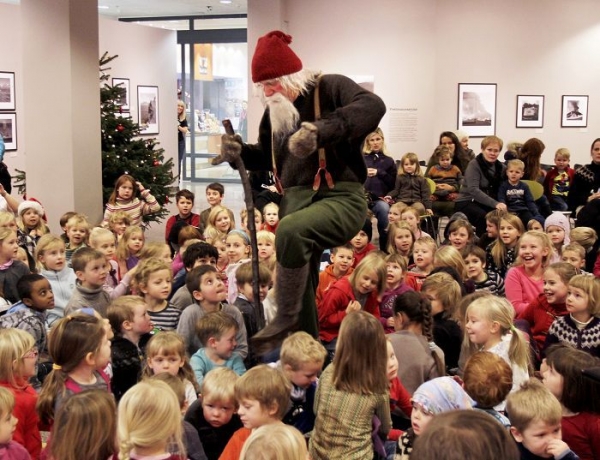
The kinder Yule lads first appeared in towns and villages, while their evil characteristics survived longer in the countryside. However, their transformation had been completed by the 1930s when the Yule lads begin making regular visits to schools and making appearances in the radio to tell children stories and sing Christmas songs.
From 82 evil spirits to 13 friendly lads
Originally the number of Yule lads varied, there are as many as 82 different lads and trolls. In the 1860s, as the stories of the lads are being collected their numbers, names and characteristics are being standardized. At the same time their numbers shrink to 13, corresponding to the 13 days of Christmas.
Read more: The story of all the Yule lads, including Window-Peeper, Spoon-Licker and Skyr-Gobbler
Today the Yule lads dress in traditional Icelandic peasant wear, but for most of the 20th century the lads all wore red, like the American Santa Claus. The re-introduction of traditional dress was made by the Icelandic National Museum in the 1980s. In 1988 the Museum began inviting children from Reykjavík schools and preschools to the museum in December to learn about history and meet the Yule lads. And of course the museum lads wore traditional clothing, rather than imported Santa Claus costumes!
Dark winter spirits
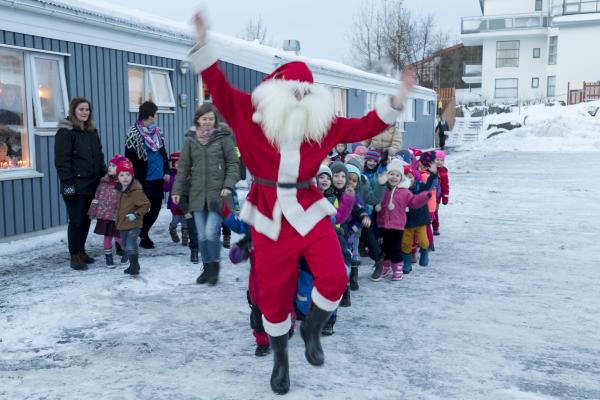
The Yule lads are examples of the dark spirits of nature which take over during the winter as people retreat indoor. Outlying mountain and heath cabins, used during the summer are abandoned in the fall and as the darkness of winter descends people would retreat closed to the core of the farm.
One by one the Yule lads then come down from the mountains, until the entire crowd of trolls has descended upon the farms and towns on Christmas Eve: Nature and its uncontrollable spirits have reclaimed the land. Then one by one they retreat back to the mountains just as darkness retreats and the days get longer.
The characteristics of the Yule lads, which appear in names like Sausage Swiper, Meat Hook, Skyr Gobbler, offer another hint to their origin as reminders that people must take care of scarce foods during winter. Sausages, smoked legs of lamb, skyr and milk can disappear mysteriously if they aren’t kept under close surveillance!
Meet the mother: A child-eating, husband-murdering ogress
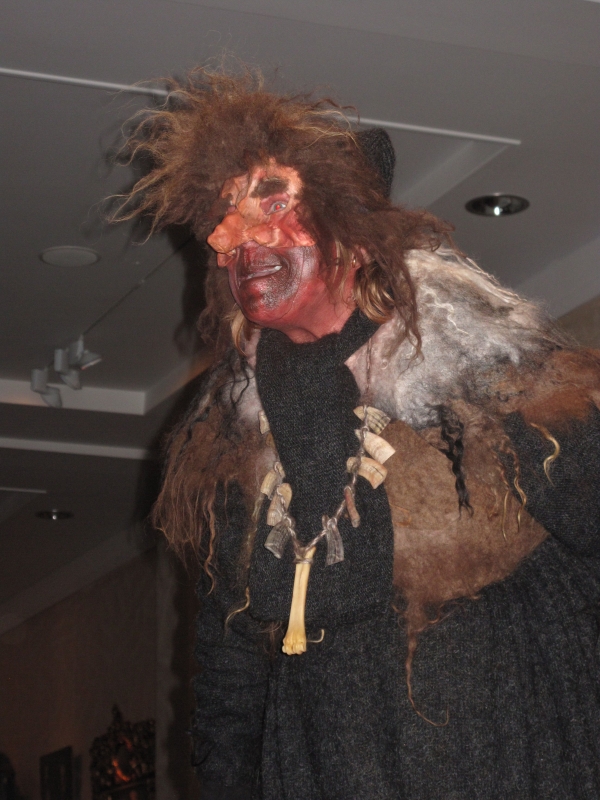
The Yule lads‘ mother is the ogress Grýla. Grýla is one of the oldest mythical characters in Icelandic folklore. She is mentioned in 13th century manuscripts, and we can also find Grýla‘s in the Faroe Islands and a closely related ogre in Ireland. She is closely related to the fear of hunger: She is always hungry, and she threatens to snatch away children, usually the naughty ones.
As the Yule lads became gentler, Grýla remained evil, keeping the old tradition of evil Christmas spirits alive. In old stories she has many heads, eyes in the back of her head, bearded, fangs, a tail and hoofs: An actual monster.
Grýla is accompanied by two other evil creatures. The lesser known is her husband, the troll Leppalúði. Grýla is a domineering woman, she is often shown beating and berating her husband. According to the legend Leppalúði is the third of Grýla’s husbands. She killed and ate her first husband Gustur. Her second husband Boli, whom she also murdered, after the two had a large number of troll children. The Yule lads are the children of Leppalúði and Grýla.
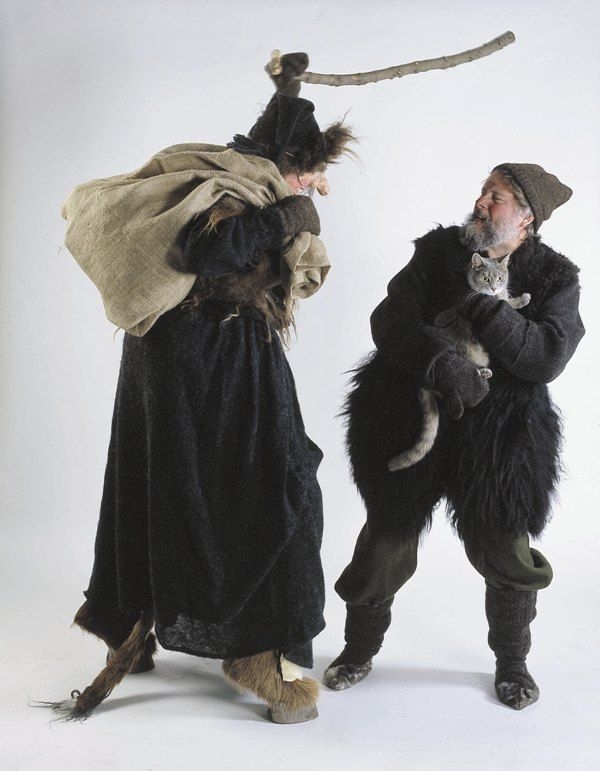
In some stories both Grýla and Leppalúði have perished from hunger, because there are no naughty children any more.
Finally: The murderous Christmas Cat
Grýla’s other companion is much better known: Jólakötturinn or the Christmas Cat. The origins of the Christmas cat are more mysterious than those of Grýla or the Yule lads, all of whom are clearly traditional trolls or mythical spirits living in mountains and uninhabited areas.
The earliest written records of the Christmas cat date back to the 19th century, but he seems to be closely related to Scandinavian beliefs in the Christmas goat. According to the story the Christmas cat will snatch and eat children who don’t get new clothing for Christmas. This belief is probably connected to the tradition of everyone getting new pieces of clothing for the holidays, and the custom of farmers giving their farmhands new clothes each year. The Christmas cat might also be connected to the pressure to finish all weaving and knitting before the holidays.




